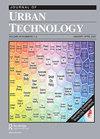自动驾驶汽车与自动驾驶汽车:语言塑造公众认知的力量
IF 4.6
3区 经济学
Q1 URBAN STUDIES
引用次数: 21
摘要
公众对下一代汽车的看法将影响它们的设计、部署和最终的使用。随着自动驾驶、无人驾驶、全自动和自主等工程术语被引入社会科学和公众,这些术语之间的微妙差异已经消失。然而,使用它们作为同义词,即使它们可能不能互换是有问题的。为了探索不同未来车辆术语的语义,我们调查了963名密歇根居民对“自主”和“自动驾驶”的理解。我们发现,人们对自动驾驶汽车和自动驾驶汽车的看法存在显著差异。前者引发了更多不确定的反应,而后者则充满了担忧。这些结果表明,用来描述下一代汽车的语言可能会影响公众的反应和接受程度。随着新的出行方式向公众推出,我们对它们的理解将在一定程度上受到用于命名和解释这项技术的语言的影响。选词绝不是无关紧要的,它在塑造公众舆论方面起着重要的作用,但却没有得到充分的重视。本文章由计算机程序翻译,如有差异,请以英文原文为准。
Autonomous vs. Self-Driving Vehicles: The Power of Language to Shape Public Perceptions
ABSTRACT Public perception of the next generation of vehicles will affect their design, deployment, and ultimately their use. As the engineering terms of self-driving, driverless, fully automated, and autonomous were introduced to the social sciences and the public at large, the subtle differences among these terms have been lost. However, using them as synonyms even though they may not be interchangeable is problematic. To explore the semantics of different future vehicle terms we surveyed 963 Michigan residents on their understanding of “autonomous” and “self-driving.” We found significant differences in perceptions between the terms autonomous and self-driving vehicles. While the former invokes many more uncertain responses, the latter is laden with concerns. These results suggest that the language used to describe the next generation of vehicles may shape public reaction and acceptance. As new mobility options are introduced to the public, our understanding of them will be shaped, in part, by the language used to name and explain the technology. Far from being inconsequential, word choice plays a major, yet underappreciated, role in shaping public opinion.
求助全文
通过发布文献求助,成功后即可免费获取论文全文。
去求助
来源期刊

Journal of Urban Technology
URBAN STUDIES-
CiteScore
8.50
自引率
4.20%
发文量
42
期刊介绍:
The Journal of Urban Technology publishes articles that review and analyze developments in urban technologies as well as articles that study the history and the political, economic, environmental, social, esthetic, and ethical effects of those technologies. The goal of the journal is, through education and discussion, to maximize the positive and minimize the adverse effects of technology on cities. The journal"s mission is to open a conversation between specialists and non-specialists (or among practitioners of different specialities) and is designed for both scholars and a general audience whose businesses, occupations, professions, or studies require that they become aware of the effects of new technologies on urban environments.
 求助内容:
求助内容: 应助结果提醒方式:
应助结果提醒方式:


